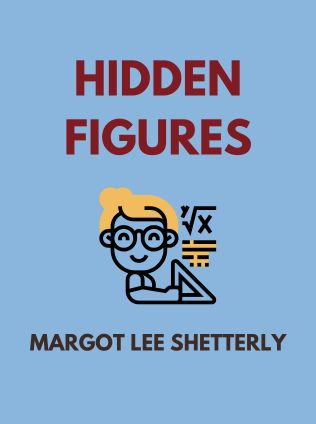
About the Author
Margot Lee Shetterly is an American author and researcher dedicated to uncovering the untold stories of African Americans who made significant contributions to history. Her most notable work, "Hidden Figures," shines a spotlight on the African-American women mathematicians and engineers who played pivotal roles in NASA's success during the Space Race. Shetterly's meticulous research and engaging narrative bring to life the struggles and triumphs of these women, highlighting their impact on science, technology, and civil rights. With a background in economics and media, Shetterly skillfully combines her analytical abilities with a passion for storytelling to bring recognition to those whose stories have long been overlooked.
Main Idea
"Hidden Figures" by Margot Lee Shetterly tells the remarkable story of African-American women mathematicians and engineers who, despite facing severe racial and gender discrimination, made crucial contributions to the US space program during its most pivotal moments. These women, including Dorothy Vaughan, Mary Jackson, and Katherine Johnson, broke through the barriers of segregation and sexism to help the United States achieve some of its greatest technological feats, such as John Glenn’s 1962 orbit of the Earth and the 1969 Apollo 11 moon landing. The book not only highlights their scientific achievements but also underscores their role in advancing civil rights and social justice in America.
Table of Contents
- Introduction: Unsung Heroes of the Space Race
- The Early Years: Overcoming Segregation and Discrimination
- The Role of Women in the War Effort
- Breaking Barriers at Langley Memorial Aeronautical Laboratory
- The Cold War and the Rise of NASA
- Contributions to the Space Race
- The Legacy of the Women of West Computing
Introduction: Unsung Heroes of the Space Race
"Hidden Figures" begins by introducing the often-overlooked contributions of African-American women mathematicians and engineers who worked at NASA during the Space Race. These women, working in the segregated South, faced immense challenges due to their race and gender. Despite these obstacles, they played a crucial role in some of the most significant achievements in American history, including the successful orbit of John Glenn and the moon landing in 1969. The book shines a light on the lives of Dorothy Vaughan, Mary Jackson, Katherine Johnson, and others, who defied societal expectations and made their mark on the world.
"These women exercised real agency and control over the course of their lives. They were protagonists who acted upon America and shaped its destiny." - Margot Lee Shetterly
Their contributions went largely unrecognized for decades, and the book aims to correct that historical oversight. Shetterly reveals how these women navigated a world that was often hostile to them, using their intelligence, determination, and community support to succeed in a field dominated by white men. Their story is not just one of scientific achievement but also of social change, as their successes challenged the status quo and helped pave the way for future generations of women and minorities in STEM fields.
The Early Years: Overcoming Segregation and Discrimination
The early chapters of "Hidden Figures" delve into the lives of African-American women during the 1940s and 1950s, a time when segregation was deeply entrenched in American society. Facilities like the Langley Memorial Aeronautical Laboratory in Virginia were no exception, with African-American women confined to separate workspaces and subjected to constant reminders of their "place" in society. Despite these challenges, these women were determined to succeed. Dorothy Vaughan, a former teacher, was among the first to break into the field of aeronautics, becoming a "computer" at Langley during World War II. Her story, along with those of her colleagues, reflects the broader struggle for civil rights and equality in America.
World War II brought about significant changes in the American workforce. The demand for skilled labor opened doors for many women, including African Americans, who had previously been excluded from such opportunities. The US government, under pressure from civil rights leaders, began to desegregate certain sectors of the workforce, including the aeronautics industry. This allowed African-American women like Dorothy Vaughan to work as mathematicians, known as "computers," at Langley. Despite their qualifications, these women faced significant prejudice and were often relegated to the least desirable tasks. However, they formed close-knit communities that provided support and solidarity, helping them to navigate the challenges of working in a segregated environment.
Sign up for FREE and get access to 1,400+ books summaries.
You May Also Like
I Am Malala
The Story of the Girl Who Stood Up for Education and Was Shot by the Taliban
By Malala Yousafzai



















